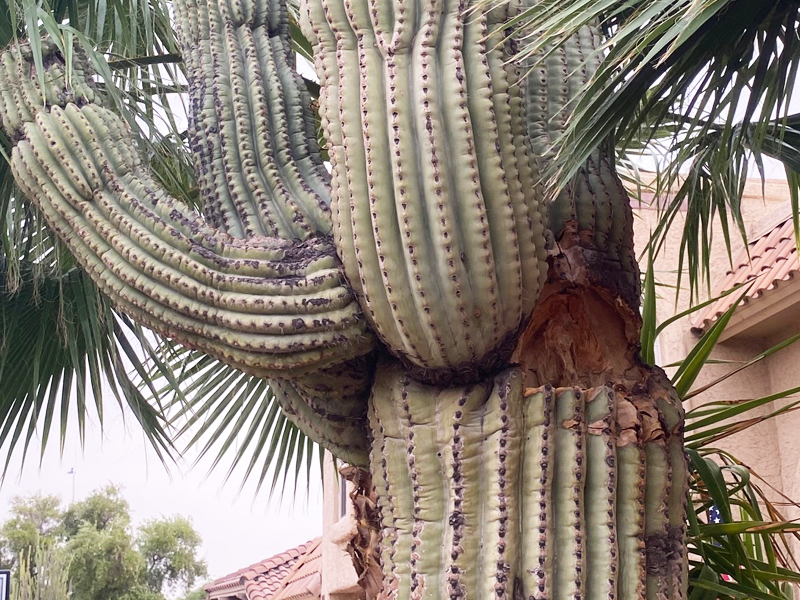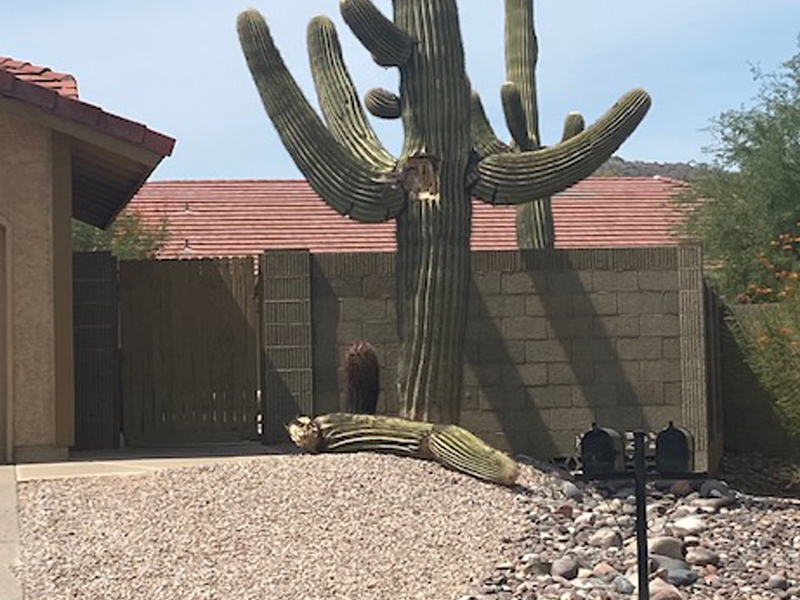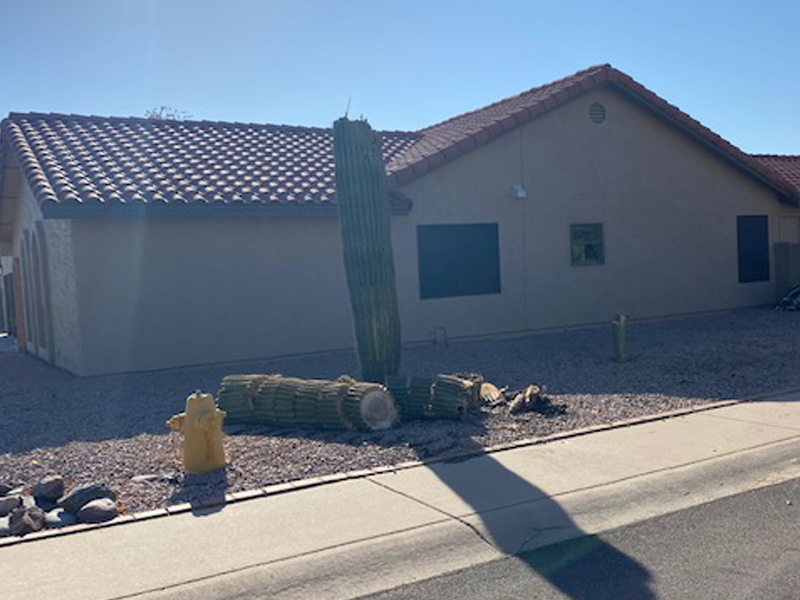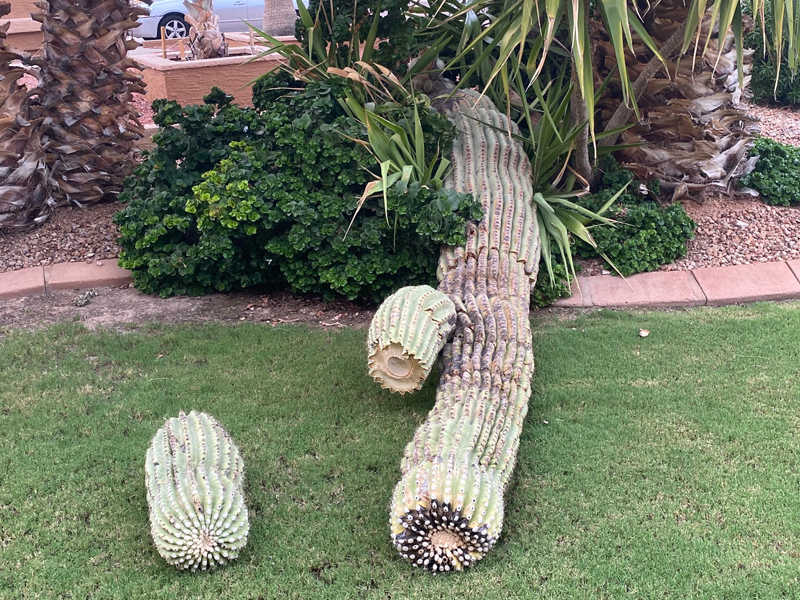In recent weeks, a large number of saguaros are falling in residential areas throughout metro Phoenix. Why is this happening?
The giant cactus or saguaro is one of the most iconic species of the Sonoran Desert. These organisms have ada pted to the environmental conditions of this region. And through millions of years, saguaros survive in harsh conditions by developing a number of strategies, including stem succulence to store water, modification of leaves into spines, accordion-like ribs that allow the stems to expand and shrivel for water storage, a thick cuticle to reduce evaporation and a metabolism different from trees and shrubs.
Here is what happens when the environmental conditions such as temperatures and water availability change and become extreme:
Excessive heat and lack of precipitation: This year, the summer has been exceptionally dry with record temperatures during the day and night. The monsoon season in Phoenix traditionally occurs between July and mid-September, but this year, there has not been the usual rains. Saguaros rely on monsoon precipitation to recover from the water lost during the hot summer months, but without it, saguaros dehydrate and suffer. The stems become thinner and the ribs are narrow and deep, and when this happens, branches and stems become weak and may collapse under their own weight.
Failing transplanted saguaros: A large number of fallen saguaros in urban landscapes have been salvaged from the wild and transplanted into residential landscapes, street medians and roadsides by commercial firms. Saguaros have shallow roots and consist of a taproot (2 to 3 feet deep) and long lateral roots that penetrate 1 to 2 feet and anchor the plants to the ground. When saguaros are salvaged, most of the lateral roots are removed, leaving only the short taproot. At the time of transplanting, saguaros are lowered into a hole and then soil is placed and tamped with a pneumatic tamper to compact soil around the roots to keep plants straight. A common practice is to plant saguaros 1 to 2 feet deeper than the original depth in order to make it more stable. This practice is the main reason why many large saguaros fail to establish in landscapes, since the roots are planted too deep, making it difficult for water and oxygen to reach the roots and eventually causing root rot. The survival rate of transplanted saguaro is estimated between 50% to 70%, and many plants can live for months to ten years before showing any signs of decay. Single stem saguaros, called spears, have a much better chance of establishing and surviving.
Effects of urban heat island and CAM metabolism: The urban heat island in metro Phoenix also affects the saguaro’s metabolism. All the concrete on the landscape absorbs heat and hangs onto it, so the temperatures at night are much higher than you would see in the open desert. Virtually all cactus use a method known as CAM, or Crassulacean Acid Metabolism, to minimize water loss during photosynthesis. Instead of taking in carbon during the day, like a normal shrub, saguaros open tiny stomata, or pores, on their skin at night when temperatures are cooler. But when you have very warm evenings in the middle of the summer, nights can still be 80 to 90 degrees Fahrenheit. That is warmer than what the enzymes that power the giant saguaro’s photosynthesis need to work most efficiently. The reduction in enzymatic action reduces carbon dioxide uptake, which is the food of the plant. Less food equals less energy to grow or to produce flowers for reproduction.
How to help your saguaro cactus to survive during hot summers? Saguaros and other cactus in general are not connected to drip irrigation, but they will need additional watering during summer. The best way of watering saguaros is to make a tree well around the base of the plant and run a hose with a trickle of water for 4 to 6 hours. This will allow the water to reach deep into the soil (2 to 3 feet) where the bulk of the roots are. By doing this once per month during the hottest months of the summer, will be enough to help the plant stay hydrated until the rains.



